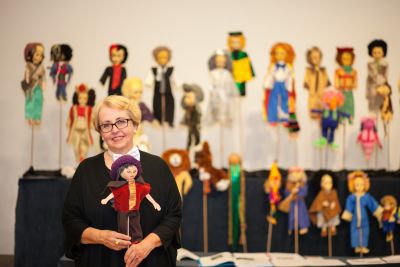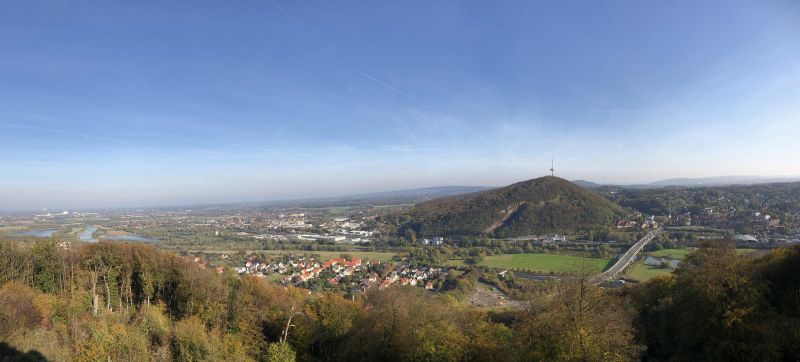Tales from the hills. The fate of Polish forced labourers at Porta Westfalica 1944/45
Mediathek Sorted






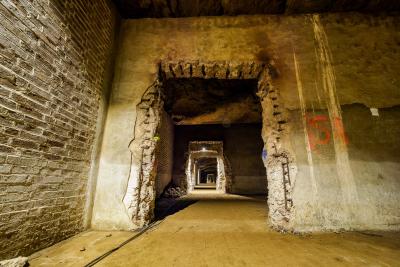
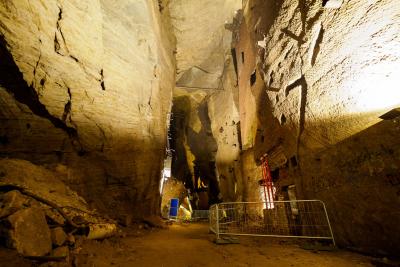

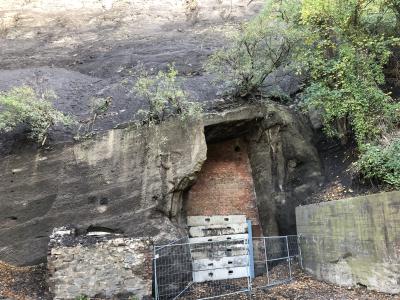

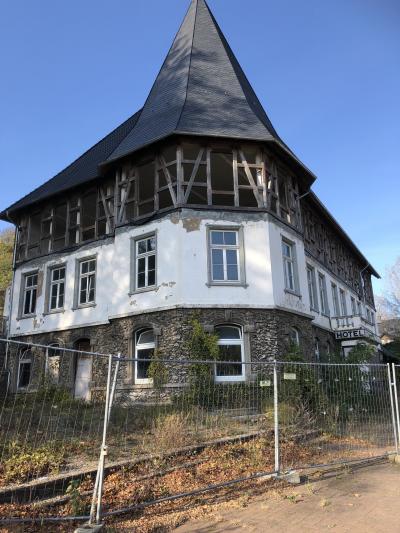

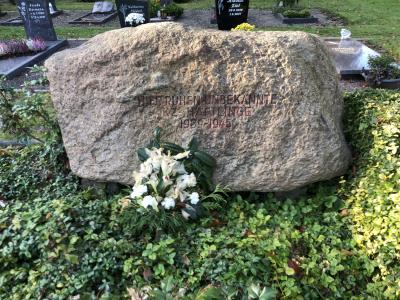

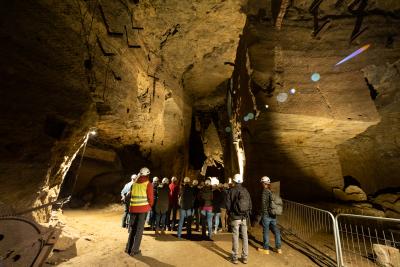

Initially without any assistance from machines, equipped with just a pickaxe, shovel and wheelbarrow, the forced labourers were required to remove the stone that had already been blasted out into the tunnel system.[34] The work was conducted in two 12-hour shifts and placed a terrible burden on the health of the prisoners. The situation was exacerbated by the inadequate amount of food, with the labourers working until they were completely exhausted. In total, the prisoners removed around 60,000 cubic metres of stone from the Jakobsberg in this way during the first phase of the forced labour at the Porta.[35]
However, working conditions hardly improved significantly during the second forced labour phase below ground. While an increasing number of skilled workers were required for some of the relocated armament production sectors, the forced labourers were continuously made to perform particularly harsh tasks. Wiesław Kielar, who belonged to a crew of electricians working for Philips, described the work assigned to the crew in the “Stöhr I” underground facility in the upper Jakobsberg tunnel system as follows:
“We entered the corridor of the mining tunnel. Here, after being counted, we were given our tasks. In a lift that travelled to all the storeys in the factory, we were taken to the fourth floor, to the division for the production of radio lamps, where we were made to erect machines weighing several tonnes, which we had brought there the day before with a great deal of effort from the goods station that was located some distance away”.[36]
Although the lift operator was required to take the forced labourers to their places of work, mention is made several times in witness reports that by accelerating the lift and then braking suddenly, he made it particularly dangerous for the prisoners to use, and that often people fell out and were forced to climb up.[37]
It is known that the female concentration camp prisoners, most of whom were Jews from the Netherlands and Hungary, worked in the “Stöhr I” underground facility, and that they were mainly put to work producing radio tubes for Philips. Although they were not forced to perform the same heavy manual labour as the male inmates, they were still subject to violent treatment by the SS guards, and suffered from equally poor nutrition that robbed them of energy.[38]
In general, all the people who were forced to work at the Porta suffered from harsh working and living conditions. Wiesław Kielar provides a very apt description of the situation at the Porta:
“The lack of food and the feeling of being constantly cold during our work, which went beyond our physical capabilities, and which we were made to do in freezing temperatures, in snow or rain, led to a slow but continuous depletion of strength”.[39]
The lack of food, violence from the guards and the harsh weather conditions had severe consequences for the health of the forced labourers. Even now, the exact number of people who died from the short- or long-term effects of the forced labour at the Porta remains unknown.
[34] See Blanke-Bohne, Reinhold, pp. 81
[35] See Combined Intelligence Objectives Subcommittee (CIOS): Report XXXIII. 38 Underground Factories in Germany, p. 60.
[36] Kielar, Wiesław, p. 376.
[37] See ibid., p. 379; see Stróżyk, Wojciech, p. 19.
[38] See Schulte, Jan Erik, pp. 144
[39] Kielar, Wiesław, p. 381.

